
|
Zuiko Digital 11-22 mm F/2.8-3.5 |

|
My other articles related to the |
|
This is a user report of the mid-price, wide-angle zoom lens for the Four Thirds system SLRs (mostly, but not only, by Olympus). While basically finished, some corrections and additions may be introduced to it in the next month or two; maybe also a few more image samples. |
|
Performance: the MTF data While I could easily shoot some targets and run the results through the Imatest software, I see no compelling reason to do that. If you would like to see such a test, have a look at the PhotoZone review. performed on the E-300 (all resolution test done with the procedure they're using measure the combined body/lens performance). The MTF curves for the lens fully open are available at the Olympus Japan site; here they are (11 mm at the left, 22 mm at the right). (For an introduction to MTF, see here; also notice the difference between LP and LW in the specs.) | |
|
The left graph is for 11 mm, the right one — 22 mm. Blue lines correspond to a frequency of 10 LP/mm (this can be loosely interpreted as a measure of contrast), while red ones — 30 LP/mm (sharpness). Then, solid lines are for sagital, and dotted for tangential patterns. Image © by Olympus Corporation |
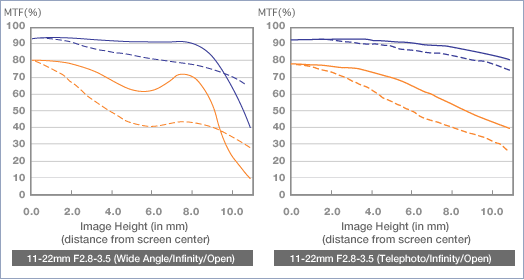
|
|
The graphs indicate clearly that, at the wide end, the central resolution is at par with the 14-54 ZD, and the sharpness fall-off is not significant up to 9 or so millimeters away from the image center; this covers the whole frame width (17 mm); beyond that (frame corners are 10.8 mm from the center) MTF values at 30 LP/mm drop significantly at the widest angle. Keep in mind that such data, especially when provided by the lens maker, may not reflect the actual resolution of the lenses sold in stores; the quality and uniformity of the manufacturing process may affect the real performance. (Most of the large camera manufacturers, like Canon, Nikon, Pentax, or Olympus, have good quality control, so significant deviations are rather unlikely.) | |
|
Distortion Wide-angle lenses, especially zooms, tend to exhibit an optical flaw called geometric distortion. Because the image magnification changes with the distance from the axis (at wide angles: usually increases), straight lines not crossing the image center will be bent (here: outwards, hence the term barrel distortion). The effect is quite hard to correct and therefore quite common, especially at the widest angle. | ||
|
Here is how our lens performs at the shortest focal length: my local library in Crofton, MD; a thumbnail of the full frame at the right, and a full-width horizontal strip, reduced in size, below.
This is a good performance for a wide zoom: comparable to "kit" zooms at twice the equivalent focal length. Still, after having heard so much good about this lens, I was expecting something better; maybe I have been spoiled by wide primes I've used in the past? |
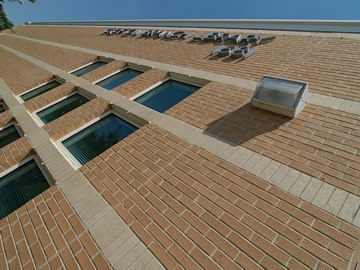
| |
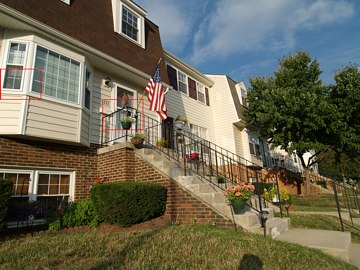
|
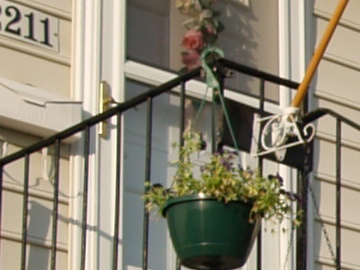
| |
| 11 mm; aperture priority (0 EV): 1/400 s at F/5.6, ISO 100; WB at 5300 K. |
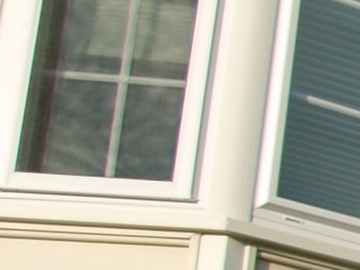
| |
| At F/5.6, the sharpness is exemplary near the center, and slightly worse, but still good, in the edge areas, where also a moderate amount of chromatic aberration can be seen: purple away from the lens axis, and green towards it (counting from the highlights, from where the effect spills into darker areas). This I found somewhat disappointing, after having heard so much raving about this lens. | ||

|

| |
| 11 mm; aperture priority (-0.7 EV): 1/250 s at F/8, ISO 100; WB at 5300 K. |
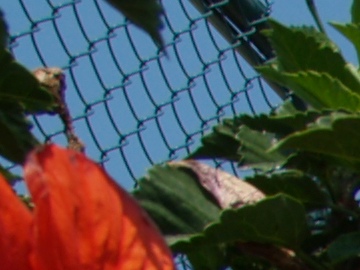
| |
| Interesting: not just the center, but also corners are very sharp here. A great show, indeed. Is it possible that in the previous sample some resolution was lost to local glare? (Disregard the red flower: it seems to be out of the depth-of-field range, being just about eight inches from the lens.) | ||

|

| |
| 11 mm; aperture priority (-0.7 EV): 1/320 s at F/8, ISO 100; WB at 5300 K. |
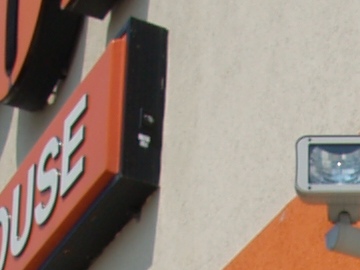
| |
|
This one is a no-brainer, and the lens took it on a stride. Actually, my other samples led me to believe, that at F/5.6 the performance is a bit better than at F/8, — but it is excellent anyway.
For a better impression (see my remark above), a moderate amount of sharpening (anything but the crude unsharp mask!) would make the characters in the blackboard really stand out. Note the detail in the trailer company logo | ||
| The next image was chosen to show the depth of field you can get at the 11 mm focal length. | ||
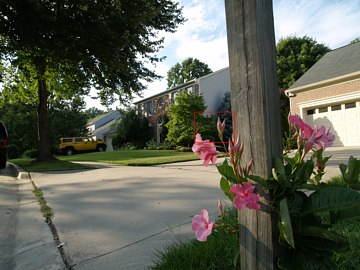
|

| |
| 11 mm; aperture priority (0 EV): 1/80 s at F/8, ISO 100; WB at 5300 K. | ||
|
At F/8 I'm getting both the foreground and the background acceptably sharp — and that's in spite of less-than-ideal focusing: right on the post, instead of slightly beyond. This wastes the DoF in front of it. For more critical uses it would be nice to have a "depth-of-field priority" autoexposure mode, like the one in the Canon 400D. If you have to know: the camera was focused at 1.165 m (according to the EXIF data). At F/8 and F=11 mm, the hyperfocal distance is, according to my tables, 1.02 m. When focused at that distance, the DoF covers the range from half that (0.51 m) to infinity. This is computed for the commonly used circle of confusion (CoC) of 0.015 mm (or 1/1440 of frame diagonal, or about three pixels) across. Please, don't get me started... | ||
|
Samples at various focal lengths and apertures To see how the lens performs at various apertures and focal lengths, I have shot three different series, iterating through all combinations of these two factors. While I've analyzed them all, let me show you just one, with 1:1 samples chosen from the center of the frame. To save space, I'm including only three apertures for each focal length: the full opening, the mid-range F/5.6, and diffraction-impaired F/16. F = 11 mm Obviously, this is the focal length of most interest to us: the main reason to buy and use this lens. | ||
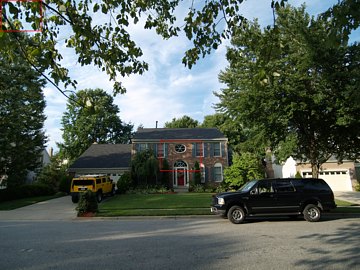 11-22 mm at 11 mm, full frame |
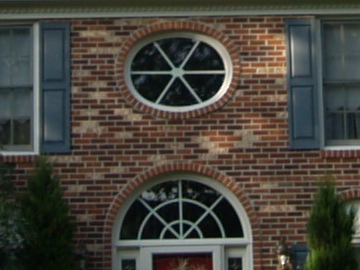 11-22 mm at 11 mm, F/2.8 | |
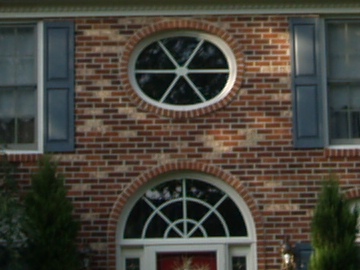 11-22 mm at 11 mm, F/5.6 |
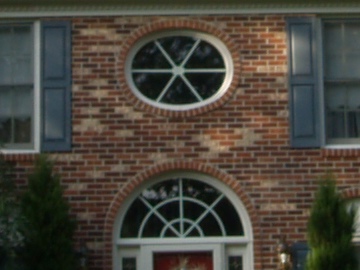 11-22 mm at 11 mm, F/16 | |
|
Surprisingly (and I could see that in the other series), the sharpness at the center does not really change between F/2.8 and F/8 (or maybe a bit less); diffraction effects start being visible at around F/11, getting worse at F/16, and quite severe at F/22. Maybe some changes could be detected with the proper measurement technique — but if I cannot tell the difference flipping between images from an 8 MP camera in a 2:1 pixel scale, then I really do not care. Neither should you. | ||
|
Now, corner samples at 11 mm, to check for chromatic aberration, which should be most visible at this focal length. Again, some chromatic aberration in extreme corners is visible; this may be the reason for the MTF fall-off above 9 mm away from the axis I've discussed before. This improves at F/4, but then stays on the same level, as far as I can tell, with the affected width of about 1-2 pixels. |
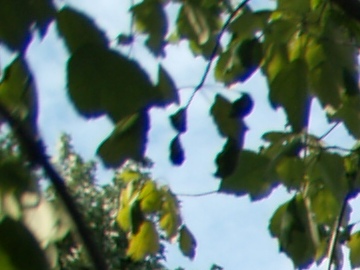 11-22 mm at 11 mm, F/2.8 | |
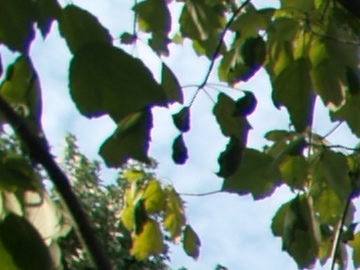 11-22 mm at 11 mm, F/5.6 |
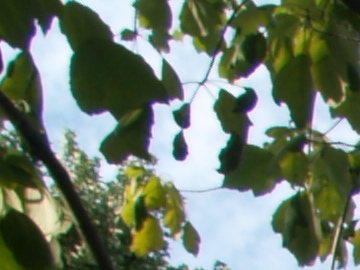 11-22 mm at 11 mm, F/16 | |
|
F = 14 mm This is also the shortest focal length offered by the "standard" ZD zooms, including the 14-54 mm I like so much. Let's have a look. | ||
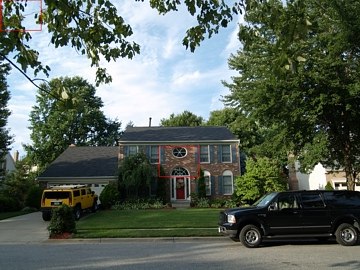 11-22 mm at 14 mm, full frame |
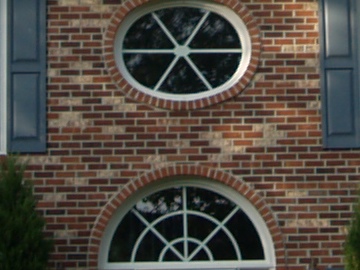 11-22 mm at 14 mm, F/3.0 | |
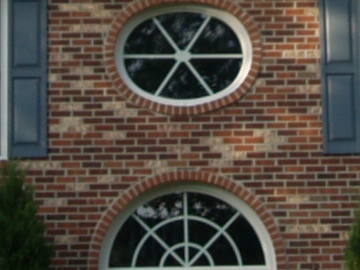 11-22 mm at 14 mm, F/5.6 |
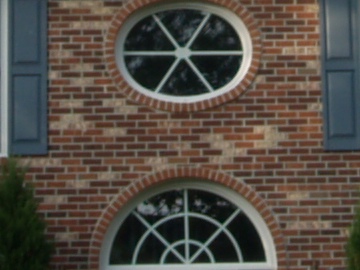 11-22 mm at 14 mm, F/16 | |
|
At first I thought I had a focusing problem — but this was not the case: the results are quite consistent on that. At 14 mm the center is at its best at the full aperture (F/3.0), getting a bit worse at F/4, and staying at the same level all the way until, at F/11, going downhill again. While not common, this is not impossible (no, you do not want to listen to all details on that). | ||
|
Now the corner samples again. The chromatic aberration at full aperture seems now to be better corrected, although some hints are still visible.
These samples are not a proof of that: comparing different frames is not safe here; the edge contrast may be different; this is rather an impression I've got from all relevant images. As unscientific as it may be, I'm quite confident in it. The unsharpness in the leaves can be attributed to limited depth of field, which was extending from four meters or so up. Anyway, the chromatic aberration at 14 mm seems to be well controlled. |
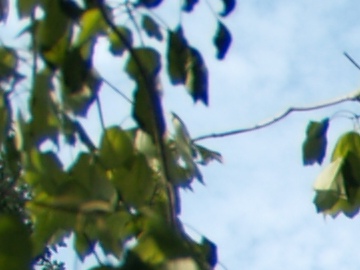 11-22 mm at 14 mm, F/3.0 | |
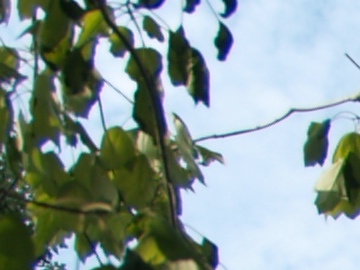 11-22 mm at 14 mm, F/5.6 |
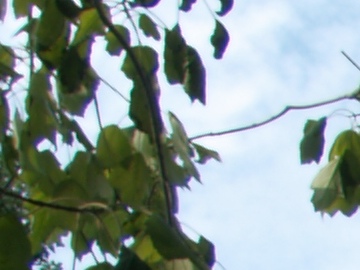 11-22 mm at 14 mm, F/16 | |
|
F = 22 mm Let me skip the next marked focal length, 18 mm, going straight to the long end of 22 mm. Here are the samples. | ||
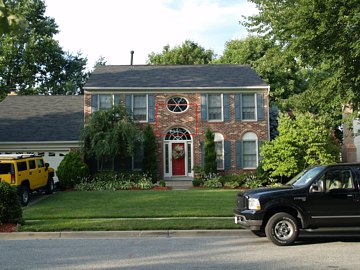 11-22 mm at 22 mm, full frame |
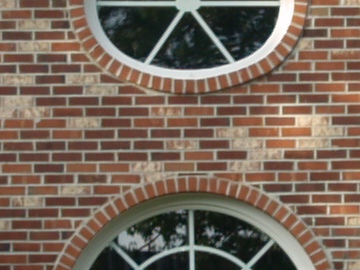 11-22 mm at 22 mm, F/3.5 | |
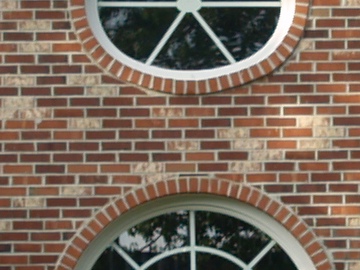 11-22 mm at 22 mm, F/5.6 |
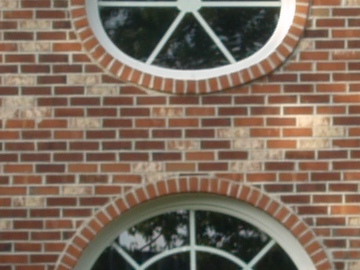 11-22 mm at 22 mm, F/16 | |
|
This is becoming predictable: results hard to tell apart for apertures up to F/8, then degrading due to diffraction (although not as strong as for the shorter focal lengths). I'm not even showing the corners: the hint of chromatic aberration is a bit less than at 14 mm. Comparison with the 14-54 mm ZD at 14 mm During the same session I took a series of almost-identical pictures with the 14-54 mm F/2.8-3.5 ZD zoom lens. Let us have a quick side-by-side comparison at various apertures, showing the frame center as before. | ||
 11-22 mm at 14 mm, F/3.0 |
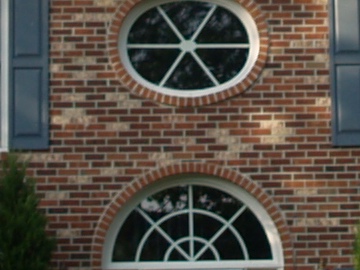 14-54 mm at 14 mm, F/2.8 | |
 11-22 mm at 14 mm, F/5.6 |
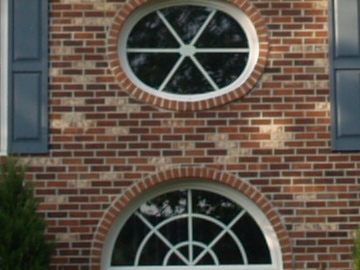 14-54 mm at 14 mm, F/5.6 | |
 11-22 mm at 14 mm, F/16 |
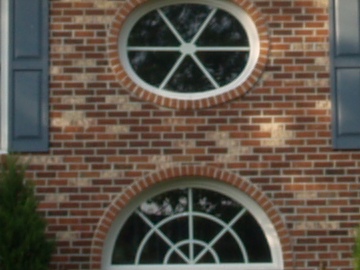 14-54 mm at 14 mm, F/16 | |
|
The apparent differences are quite subtle: at the full aperture, the wide-angle zoom seems to have a slight edge; the situation is reversed at F/5.6. I could see this in two out of three such comparative series I've shot; in the third one the match was too close to call. Anyway, we are hairsplitting here. These are not differences you would see in a 30×40 cm (12×16") print. So, what do I think? This is a very good, if not outstanding, lens. Trying to combine a short focal length with large maximum aperture had to induce some compromises in the distortion and aberration department, especially if the lens were to stay in the non-exotic price range. While generally offering a solid optical performance (in addition to top-notch construction quality), it suffers a bit at the shortest focal length of 11 mm, losing some resolution in the corners and showing some chromatic aberration there. While these flaws are unlikely to show enlarged up to 30×40 cm (12×16"), I was slightly (just slightly!) disappointed after having heard to what most users had to say about it — especially after my previous acquisition of the 50 mm Macro ZD. Update of 2008: Now, a year after this article was originally written, I have to rewrite the conclusions, so the rest of this section is brand new, to reflect my current thoughts. First of all, originally (just a year ago) I wrote: One lens causing a stir in the Four Thirds community is an upcoming 12-60 mm ZD, expected later in 2007. Its wide-angle capabilities will be close (if not the same; 1 mm makes a visible difference here!) to those of the 11-22 mm, and the long end of 60 mm makes it ideal for travel photography and other applications of general nature. I do not expect that lens to match the 11-22 mm optically, especially at the short end, but the lens may be "good enough" for what most of us are doing. Now, my expectations were wrong. The 12-60 mm ZD turned out to be as close to perfection as possible. True, the one-millimeter difference at the short end can be noticed, but it is not that significant, and what you get with the new lens is the whole range up to 60.mm, making it an excellent all-around shooter. Most importantly, optically the 12-60 mm ZD is at least as good, perhaps better than the 11-22 mm ZD, something I would hard to believe in a 5× zoom. This is against my preconceptions, but I've used both lenses a lot, and that's what I can see. (A direct, strict comparison is not practical, as the 11-22 ZD samples were shot with the E-500, while the 12-60 ZD ones — with the E-510 and E-3, see my note above). The 12-60 mm ZD is just $250 or so more expensive, which makes it a very strong contender in this context (for me: a clear winner). Then, another alternative: the 7-14 mm F/4.0 ZD. True, it is one F-stop darker (at the wide end) and costs more that twice as much. So what? You get what you pay for: its resolution is outstanding, and the wideness of the short end has yet to be matched in any rectilinear lens for a Four Thirds (or APS-C) camera. If you really need a super-wide angle, that's the only solution. In 2008 Sigma released the 10-20 mm F/4.0-5.6 EX DC HSM (the "DC" is important here: this is not a re-labeled 35-mm "full frame" lens!). I haven't tried it yet, and I haven't seen any meaningful samples, but at $500 it is aiming for a share of the same market, even if it is one F-stop darker. Last but not least, later this year we are expecting the 9-18 mm F/4.0-5.6 ZD ED by Olympus. All right, I do not expect it optically to be a match for the 11-22 mm, and, again, it has a smaller aperture, but 9 mm (as compared to 11) is nothing to sniff at, and many people who do not want to spend $1500 for the 7-14 mm ZD (which is worth every penny of that price!), may see it as an attractive budget alternative. With all these choices, I no longer consider the 11-22 mm ZD a very attractive offering, at least not without a significant price cut. Feel free to disagree with me on this subject: after all, your needs and preferences may differ. Actually, what I think the ZD line needs is a mid-priced, wide-angle lens with a fixed focal length of 10 mm and an aperture of F/2.8; I would be the first to stand in line to get it, especially if I can afford it. | ||

|
My other articles related to the |
|
Olympus® is a registered trademark of Olympus Corporation.
This page is not sponsored or endorsed by Olympus (or anyone else) and presents solely the views of the author. |
| Home: wrotniak.net | Search this site | Change font size |
| Posted 2007/07/09; last updated 2008/06/28 | Copyright © 2007-2008 by J. Andrzej Wrotniak |